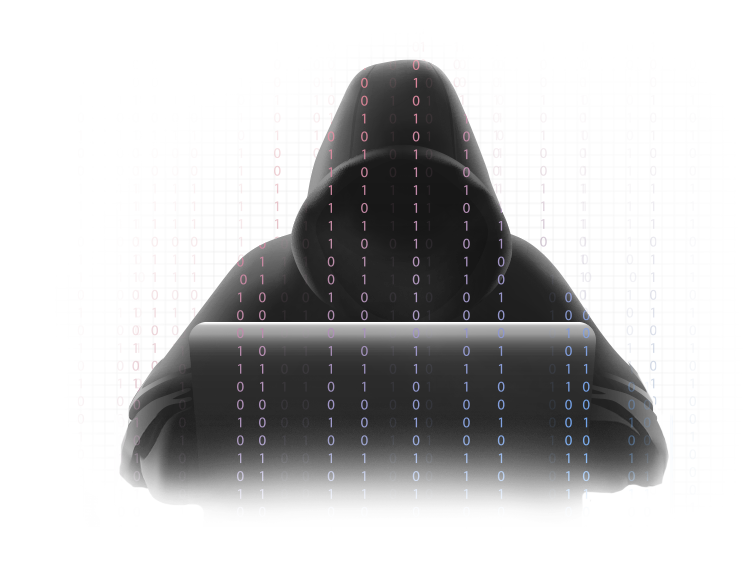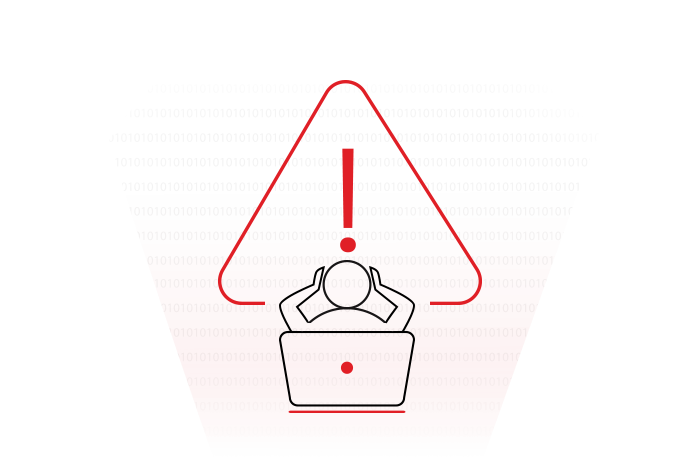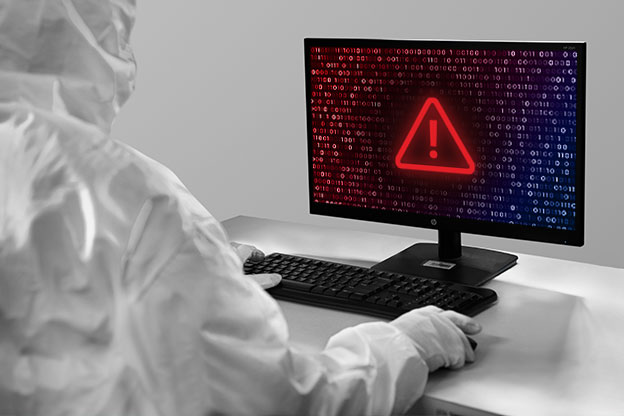Ransomware Recovery Services
Data Recovery Across All File Types and Storage Devices
Stellar offers professional ransomware recovery services, ensuring secure and confidential restoration of your critical data. Our comprehensive solutions include file repair, recovery of ransomware-affected databases, photo & video restoration, supporting all storage devices and servers such as HDDs, SSDs, External hard drives, NAS Servers, RAID arrays, etc.

Repair Files Corrrupted by Ransomware

Repair Ransomware-hit Database

Repair Ransomware-Hit Multimedia
Serving Businesses and Individuals Worldwide
Expert Services to Repair Ransomware-Corrupted Database
Our recover & repair services for ransomware-hit files and databases have supported businesses across various industries, including BFSI, manufacturing, and automobile sectors, in recovering critical data. In most ransomware cases, we perform RAW recovery to retrieve data effectively while maintaining its integrity. Moreover, by leveraging advanced recovery techniques and protocols, we help customers regain access to their critical data efficiently and securely. Stellar’s proven expertise ensures fast and secure data restoration, helping businesses minimize downtime, maintain continuity, and recover confidently from ransomware attacks.
Banking & Finance
Insurance
Automobile
Manufacturing
IT & ITES
Healthcare
Govt & PSUs
Education
Legal Services
Media and Entertainment
E-Commerce
Real Estate
Most Notorious Ransomware Groups

Ransomware groups are known to target organizations working in governance, healthcare, hospitality, education, and other sectors that have a large workforce. Some prominent ransomware that have seriously jeopardized large organizations in recent past are CrySis/Dharma, GlobeImposter/LOLKEK, Lockbit, Qilin, ALPHV/BlackCat, Black Basta, Hive, Conti, BianLian, Vice Society, WannaCry, BlackBit, Karakurt, BlueSky, and OPQZ.
Offshoots/variants of prominent ransomware are often deployed by cybercriminals to attack individuals or MSMEs’ devices. Some of the largest-scale attacks on individual devices in recent past have been carried out using DJVU/Stop, Makop, and Phobos ransomware.
CUSTOMER STORIES
Ransomware Recovery Success Stories
Our recent case studies highlight successful data recovery from ransomware attacks by Lockbit, BlackCat, Conti, Phobos, Makop, Hive, etc. These real-world examples demonstrate our expertise in restoring critical files and databases for businesses across diverse industries. Stellar’s advanced recovery techniques and secure, efficient solutions have helped organizations overcome ransomware threats and regain access to their vital data timely.
TOP USE CASES FOR RANSOMWARE DATA RECOVERY
Our Recent Success Stories of Ransomware Attack Recoveries
Our experts have recently tackled and resolved complex ransomware cases, restoring critical data for clients. Beyond ransomware recovery, we handle data loss from various cyberattacks with precision and care. Stellar ensures your data is in safe hands, no matter the challenge.

Makop Ransomware – Server Data Recovery
Recently, our Data Recovery Centre in Hyderabad successfully recovered data from a server affected by the malicious Makop ransomware. Our team of experts recovered and manually repaired the compromised database, ensuring the integrity of the data and enabling seamless business continuity for the client.
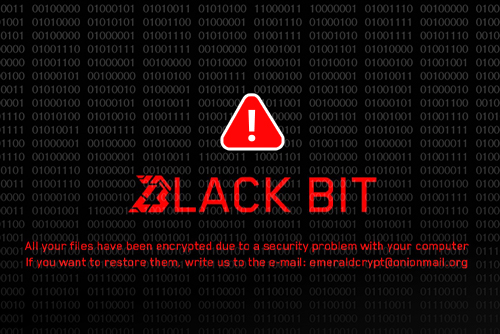
BlackBit Ransomware – Accounting Database Recovery
We recently achieved a successful recovery from a server crashed by the BlackBit ransomware. The attack had compromised critical accounting database files (Marg ERP). Leveraging proprietary recovery techniques, our experts restored 99% of the data, ensuring the client’s business operations suffered minimal downtime.
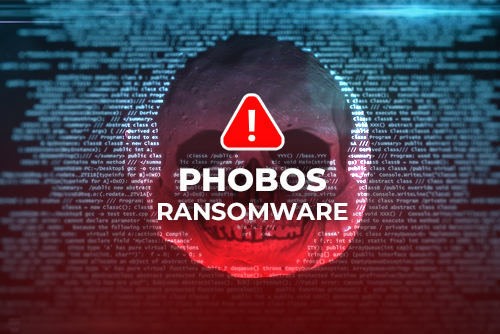
Phobos Ransomware – Exchange Server Database Recovery
Ransomware recovery for a multinational IT products company was successfully completed after their exchange server database was severely damaged by the Phobos ransomware. The attack compromised the entire Exchange server environment and affected the Active Directory as well.
Our Recovery Process
Restore Your Data from Ransomware in 4 Simple Steps
Experience hassle-free ransomware data recovery in four simple steps. Our efficient process ensures your encrypted data is recovered quickly and securely, regardless of the media type.
SAFE AND RELIABLE RANSOMWARE DATA RECOVERY SERVICES
Recover Your Ransomware-Infected Files
We are a professional data recovery services provider and can recover your infected data from all types of ransomware families. We can recover files infected by WannaCry, Wallet, Locky, CTB, CryptoLocker, Onion, Lockbit, BlackCat, Conti, Phobos, Makop, Hive, GrandCrab, Satana, Petya, Win Locker, DJVU/Stop, Critroni, etc.

World-Class Data Recovery Services
- Over 3 million satisfied customers worldwide.
- Proven track record of 30 years in ransomware data recovery.
- Unmatched success rate of 100% in recovering data from ransomware attacks.
- ISO 9001 and ISO 27001 certified organization for secure and reliable recovery.
DO'S & DONT’S
Essential Do's and Don’ts for Ransomware Data Recovery
 Do’s
Do’s
- Isolate the infected system immediately.
- Document ransomware messages and encrypted files.
- Consult professional data recovery experts.
- Use trusted antivirus or anti-malware software.
- Backup encrypted data for future recovery.
 Dont’s
Dont’s
- Don’t pay the ransom.
- Avoid restarting the system.
- Don’t attempt DIY recovery methods.
- Don’t delay action.
- Avoid sharing credentials with unauthorized parties.

Need to talk to an Expert?
Get a FREE phone consultation with our data recovery expert
USEFUL ARTICLES
Ransomware Data Recovery
How to Prevent Ransomware Attacks?
Learn effective strategies to safeguard your data and systems from ransomware attacks. This blog provides essential tips to enhance cybersecurity and protect against potential threats.
Success Story: Recovered Data from a Ransomware Attack on EVM SSD
Read how Stellar experts successfully recovered critical business data encrypted by ransomware on an SSD, saving the client from significant financial loss.
How to Recover Data Deleted or Encrypted by Ransomware [Comprehensive Guide]
Lost access to your files due to a ransomware attack? Discover expert insights and recovery methods to retrieve your data without paying a ransom in this detailed guide.
FAQ
Our exclusive technique allows us to locate and reconstruct the impacted files in many circumstances, making the recovery of Qilin-encrypted ransomware files possible.
To ensure that the files are not corrupted and that recovery is feasible, this procedure necessitates knowledge about the impacted storage device. All of the main storage devices, including RAID systems, servers, virtual machines, databases, and storage (NAS, DAS, and SAN), are well-versed by our professionals.
Never pay the ransom as it does not guarantee that you will get access to your files again. Moreover, it could make you the target for more ransomware payments. Thus, take the help of ransomware removal services to decrypt the data.
Yes, you can access your files without paying the ransom or restoring them from backup. You can opt for software solutions or services.
You can do the following to protect your system from ransomware.
1. Install and use an updated antivirus.
2. Keep your software updated.
3. Avoid clicking on links or opening emails and their attachments from people or companies you don't know or do not do business with.
4. Keep a pop-up blocker running in your web-browsing applications.
5. Regularly backup your important data.
Your IP address is not hidden. It exists in the email. There are several tools available online that determine the IP address.
Immediately disable internet connectivity from all servers or PCs to ensure there is no further encryption of data. If the ransomware is associated with a time limit, then set the BIOS clock back. You can also reach out to Stellar Data Recovery Experts.

